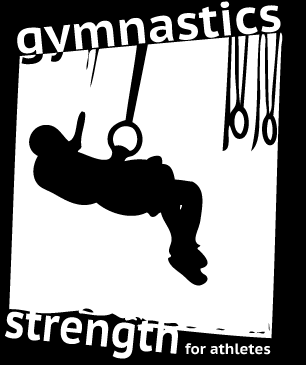How Do They Get Those Scores?
Posted by Keith Pettit on
You were watching the Olympics and you could generally tell who was the best, Nastia and Tim tried to explain to you the deductions etc, but you just want to know how those scores came about. The scores weren't just pulled out of a judges hat, or body part - there is a method to the madness. And I will try to explain to you how!
Each final score is made up of two scores added together - the execution and the difficulty.
The execution score is the easiest to understand but also the part that is subjective. The execution score starts at a 10:0. Then every time the gymnast doesn't complete a skill perfectly a deduction occurs. Each deduction can be small (.1), medium (.3), large (.5) or a fall (1.0).
Like in a landing:
- Small step less than shoulder width is a .1 deduction.
- Big giant hop is .3 deduction.
- Fall on your keister and its 1.0 off.
Same logic applies to angle deductions. If a skill is supposed to end in handstand but doesn't the deduction is small if its pretty close to a handstand and large if its way off. Bending lets, feet apart etc all follow the same deduction logic.
Pretty simple right?
Ok now lets get to the all important Difficulty score. I will talk about guys gymnastics since I know that better (Women's is similar but not exactly the same - they count only 8 skills).
Each event (besides vault) has 5 requirements that are worth .5 each.
Lets look at this routine from one of my kids:
One of the requirements is a long hang swing skill. A simple giant (swinging around the bar in straight body) or the giants where he does a hop turn (called a rybalko) fulfill that requirement. He does at least one of those, so he gets the five tenths.
Another requirement is the release skill. As you can see he does two of these (but only needs to do one) so he gets that five tenths.
Next requirement is an in bar skill. Notice towards the end of his routine he straddles his legs and goes around the bar to a handstand? That is called and endo and it fulfills the requirement of his in bar skill. So there's another five tenths.
Next requirement is harder to see. Its called a dorsal. The gymnast must have his back to the bar or in eagle grip. Take a look in the middle of the routine he will do a full turn and catch in eagle grip and then goes around the bar in that grip before he hops to a normal undergrip. The eagle grip giant fulfills that requirement.
The final requirement is a dismount. As you can see he does a dismount and its hard enough degree of difficulty so he gets the 5 tenths there.
So right now his difficulty score stands a 2.5.
Now the judge takes the highest rated 10 skills in his routine and adds them together. A skill is rated from an A to a G. An A is worth 1 tenth, a B two tenths, C three tenths etc.
If we examine his release moves. He does two releases where he lets go of the bar, flips twice and catches the bar (called a kovacs). The second one is done tucked and is a D skill so it is worth .4 and the first one is done stretched so it is an E skill and worth .5. So changing the body position of a skill can increase the value of the skill and it becomes a completely different skill.
Here is how his entire routine is valued:
Uprise pirouette - A
Back Giant - A
Back Giant - nothing since he already did one - so we wont mention back giants again
Laid out Kovacs - E
Tuck Kovacs - D
Hop full pirouette - C
Hop 1.5 turn pirouette (Rybalko) - C
Front Giant - A
Full pirouette to El Grip - C
Eagle Giant - B
Endo - B
Giant Pirouette - A
Double back with two twist stretched (Laid out double double) - E
His top ten skills come in at 3.0 plus the 2.5 for the requirements for a difficulty score of 5.5.
If he did this routine perfect (which since I am his coach I think he did), his highest total score would be 10.0 + 5.5 = 15.5.
In this meet I think the he scored about a 14.0 meaning the mean judges had about 1.5 off in deductions.
There are also bonuses (doing releases together etc) that can add more difficulty. I figured this is enough for you to understand.
Each event except vault is scored in a similar manner. So there you go, you are now able to put on a blue blazer and give those gymnasts on tv a score!
Share this post
0 comment
